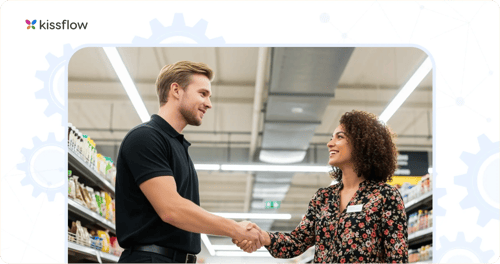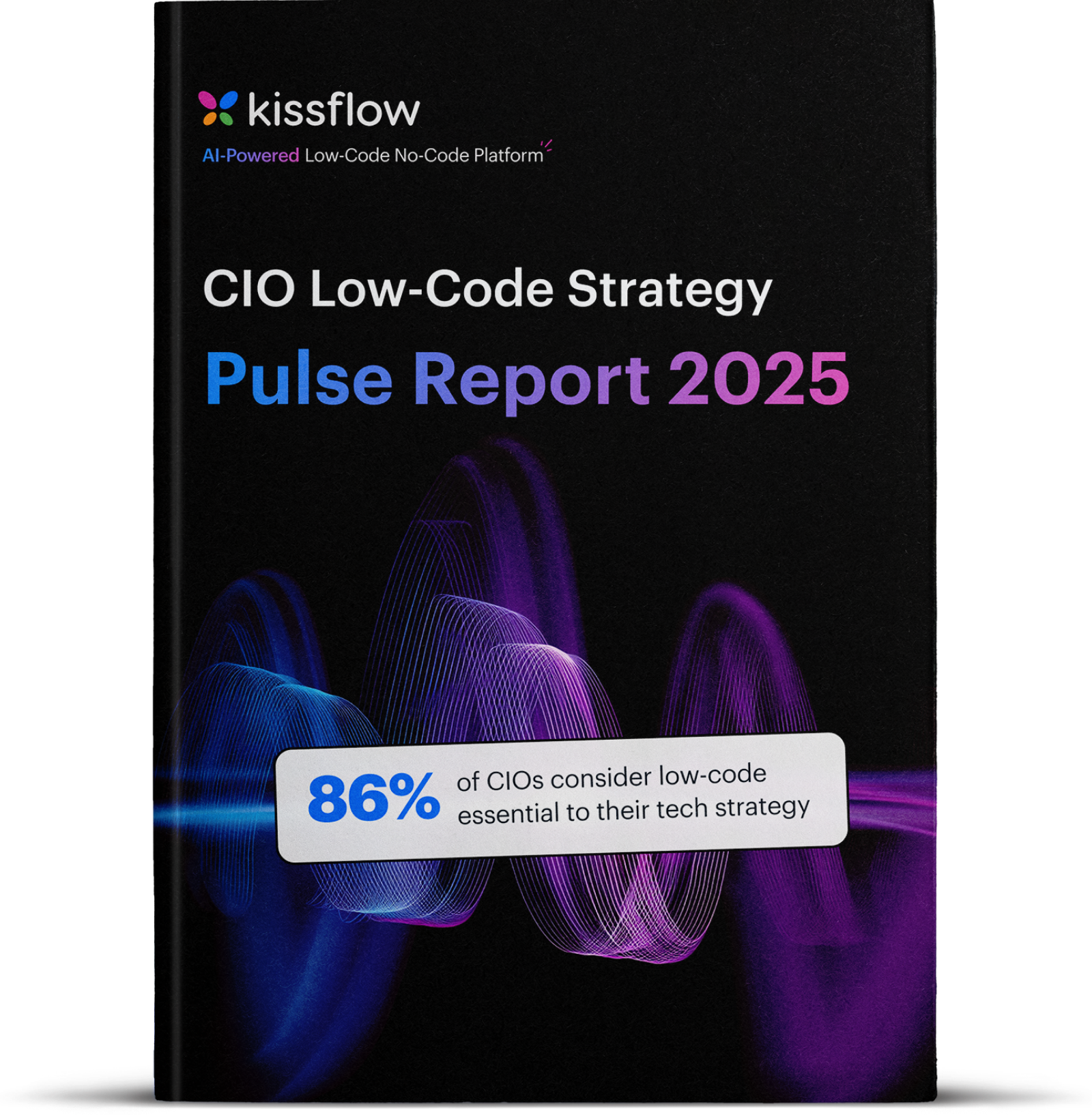
- >
- Retail>
- Enhancing customer retention with automated loyalty workflows in retail
Enhancing Customer Retention with Automated Loyalty Workflows in Retail
Retail is getting harder every year. Customer acquisition costs have tripled in some sectors, while margins keep shrinking. The old playbook of throwing money at ads until something sticks? That's dead in the water now.
The brutal truth is that getting a new customer costs 5- 7x more than keeping one you already have. Yet most retailers still blow their budget on Facebook ads while their existing customers quietly slip away to competitors.
Acquiring a new customer costs 5 to 7 times more than retaining an existing one, while repeat customers spend 67 percent more per visit, emphasizing the value of loyalty programs in driving revenue.
Loyalty programs drive repeat business and stickiness
According to the Global Customer Loyalty Report 2025, 83 percent[1] of loyalty program owners who measure ROI report a positive return on investment. Programs generate 5.2 times more revenue than their cost, up from 4.8 times the previous year.
During their Black Friday sale, a customer, Maria, started shopping at a small fashion boutique, hunting for deals. Fast-forward 18 months—she's dropping $300 every couple of months without even looking at prices. What changed? The boutique made her feel special. When her first customer anniversary rolled around, they sent her a surprise package with what looked like a handwritten note and 20 percent off her favorite stuff.
She posted about it on Instagram. That one post brought in three new customers who are now regulars. Retail customer loyalty automation is working exactly like it should – creating moments that turn customers into marketing machines.
Loyalty program owners allocate 31.4 percent[2] of their total marketing budget to consumer loyalty and CRM, reflecting a 4.4 percent increase from the prior year, showing growing investment in loyalty initiatives.
Manual loyalty management creates inconsistent experiences
Most loyalty programs look great on paper but fall apart in execution. Take this home goods chain, a beautiful multi-tier program with exclusive access, birthday rewards, and nine yards. Reality? It's a complete mess.
Customers hit Gold status and wait three weeks for their perks to kick in. The app shows 500 points, the website shows 350, and the store computer shows something else entirely. One woman earned a free product reward but couldn't use it because the store's system hadn't caught up yet.
She walked out empty-handed and never came back. That's $2,400 in annual spending gone because their systems couldn't communicate. One bad experience erased months of good ones.
What's holding loyalty programs back
The problem isn't strategy – most retailers know what good loyalty looks like. The breakdown happens when rubber meets road.
Operational delays in manual loyalty management
Picture December 15th at any retailer running manual loyalty processes. Holiday shopping is in full swing, and their team is drowning in tier upgrade requests and reward approvals. Meanwhile, customers who spent big on Black Friday still await the benefits they earned weeks ago.
A beauty retailer hit this exact nightmare in 2022. By December 20th, they had 847 pending tier upgrades in someone's inbox. Customers who should've been getting VIP shipping paid regular rates because their upgrades were stuck in limbo.
Many spent $650 across November and December, but were still stuck in Silver status while their Gold benefits gathered dust in an approval queue. They tend to get fed up and place their next $400 order with some competitor, but they processed the upgrade instantly. That retailer didn't just lose sales; they lost customers forever.
Lack of real-time logic breaks omnichannel consistency
Customers don't shop in neat little boxes. They research on their phone, compare prices on their laptop, and buy in-store. They expect their points and status to follow them everywhere.
But when systems don't sync in real-time, you get those cringeworthy moments where the mobile app shows one point balance, the website shows another, and the store computer shows something completely different. Try explaining that to someone who just wants to use their hard-earned rewards.
Mobile apps are the preferred channel for 59 percent[3] of consumers interacting with loyalty programs, highlighting the importance of seamless mobile experiences in loyalty automation.
Retail automated loyalty programs and retail solutions fix this mess by keeping everything synced instantly. No more awkward conversations. No more "let me call my manager" moments. No more customers walking away because the systems can't get their act together.
“Loyalty programs are among the top five most effective owned marketing tactics across all stages in the customer lifecycle.”
— Mary Pilecki, VP and Principal Analyst, Unlock Loyalty Throughout The Customer Lifecycle, Forrester
Personalizing and scaling loyalty with technology
Smart retailers use tech to create experiences that feel handcrafted while running at a massive scale. The secret sauce? Turning customer data into smart automation.
CRM data unlocks smarter loyalty logic
Modern retail CRM loyalty systems are sitting on goldmines of customer intel. Every click, purchase, and interaction tells a story about what someone wants. The problem is, most retailers are terrible at reading these stories.
Smart automation changes that game completely. Instead of treating everyone equally, retailers can spot the warning signs when someone's about to bail and hit them with the perfect win-back offer. They can identify rising stars and fast-track them to higher tiers before they know they want the upgrade.
AI and machine learning will transform retail operations in 2025[4], particularly inventory management and customer experience. They will enable smarter stock control and personalized engagement that boosts loyalty and sales.
Customer retention software for retail can flag customers whose behavior has changed, like someone who used to shop weekly but hasn't been in for two months. Trigger the right intervention immediately, and you can save that relationship before it's too late.
From the consumer perspective, 69.8 percent[5] join loyalty programs primarily to earn rewards, discounts, or cash back, and 40 percent want more ways to earn points, indicating demand for richer, more engaging loyalty features.
Automate the entire loyalty lifecycle
Forget processing transactions one at a time. Smart retail customer loyalty automation handles everything from sign-up to the customer's 100th purchase.
Hit a spending threshold? Instant tier upgrade. Earn enough points for a reward? Immediate notification. Refer a friend? Both accounts get credited automatically. No delays, mistakes, or frustrated customers waiting for stuff they already earned.
The magic happens in the background. Bonus points for special events, category promotions, and seasonal campaigns run automatically while the team focuses on the bigger picture.
Send personalized notifications to engage customers
Generic "thanks for shopping" emails are dead and buried. Today's personalized marketing automation retail knows when Sarah usually shops, what she likes to buy, and whether she prefers texts or emails.
When she earns a reward, she gets a text (because she's always on her phone) suggesting products she actually wants. Not random clearance junk – stuff based on what she's bought before.
Birthday campaigns become real celebrations, not mass mailings. Anniversary messages mention specific purchases and milestones. Win-back offers feature products similar to past purchases. Everything feels personal because it actually is.
Track performance with real-time dashboards
Most loyalty programs operate blindly. Real-time dashboards change that by showing exactly what's working, what's not, and where the biggest opportunities are hiding.
See which rewards people want, which customer segments are most valuable, and which campaigns drive real revenue. Spot problems before they become disasters. Find trends that could inform the next big strategic move.
Kissflow's role in empowering retail loyalty programs
This is where platforms like Kissflow connect complex loyalty needs with smooth operations that work.
Integrate seamlessly with CRM and loyalty engines
The beauty of modern workflow automation is that it plays nicely with existing systems. Kissflow connects CRM platforms, loyalty engines, and customer engagement platforms in retail without forcing expensive rip-and-replace projects.
Customer makes a purchase? The whole chain reaction happens automatically. Transaction flows to the CRM, points get calculated, tier status updates are made if needed, and personalized messages are sent. All in real-time, all without anyone touching it.
Flexible, configurable workflows for loyalty campaigns
Every retail business is different, and cookie-cutter solutions don't work. Kissflow's low-code approach lets marketing teams build custom workflows that match exactly how their business operates.
Want a complex, tiered promotion with approval workflows for expensive rewards? Done. Need seasonal campaigns with automatic start and stop dates? Easy. Want to A/B test different reward structures? Built right in.
SLA-based routing for accurate and timely fulfillment
Not all customers are equal, and fulfillment shouldn't treat them that way. VIP members get white-glove treatment with expedited processing. Standard members follow normal timelines. It's about setting expectations and delivering on promises.
Track loyalty operations with visual dashboards
You need to know immediately when things go sideways (and they will). Kissflow's dashboards show processing times, error rates, and customer satisfaction metrics in real-time. Spot bottlenecks before they mess up customer experiences.
Low-code flexibility for marketing and IT teams
Best part? Marketing teams don't need computer science degrees to make changes. Want to test a new reward structure? Modify the workflow directly. Found a winning campaign that needs scaling? Roll it out without waiting for IT resources.
Better engagement, efficiency, and scale
Moving from manual to automated loyalty management isn't just about efficiency. It unlocks possibilities that were never feasible before.
Faster and more accurate reward fulfillment
When customers get rewards instantly and accurately every single time, something clicks. They start trusting the program. They start looking forward to hitting the next milestone. They start talking about the brand to friends.
Accuracy matters as much as speed. One missed reward or botched tier upgrade can undo months of positive experiences. Automation eliminates those trust-breaking moments.
Deliver personalized experiences that boost engagement
Retail customer loyalty automation makes real personalization possible at scale. Every customer gets communications tailored to their preferences, rewards that match their interests, and experiences that feel individually crafted.
This isn't just using names in emails. It's understood that Jessica prefers skincare and shops on weekends, while Michael is all about tech gadgets and browses during lunch. Different customers, different approaches, same level of attention.
Lower manual workload and operational friction
Teams stop being order-takers and become strategists. Instead of processing transactions and chasing system updates, they analyze trends, optimize campaigns, and find new ways to surprise customers.
The ROI usually shows up within months. Fewer customer service calls about missing rewards. No more overtime during promotional periods. Teams that can focus on growth instead of maintenance.
Scale loyalty across channels and geographies
Whether there are 5 stores or 500, automated systems maintain the same consistency and customer experience. Adding new locations or channels doesn't mean exponentially increasing complexity.
Global retailers especially benefit. With different time zones, languages, and currencies, automation handles the complexity while maintaining unified customer experiences.
Transforming loyalty programs with automation
The retail landscape keeps getting more competitive. Customer expectations keep rising, and the margin for error keeps shrinking. In this environment, retail customer loyalty automation isn't a nice-to-have anymore. It's survival.
Why automation is key to next-gen loyalty programs
Customers expect Amazon-level experiences everywhere they shop. Instant gratification, perfect personalization, seamless experiences across channels. Manual processes can't deliver this level of sophistication at the speed and scale required.
The retailers who thrive in the next decade will adapt quickly to changing preferences while maintaining operational excellence. Automation provides both the agility and intelligence needed to stay ahead.
Modernize loyalty with advanced automation capabilities
Today, technology exists to transform loyalty programs from operational headaches into competitive advantages. The question isn't whether retailers can afford to invest in automation—it's whether they can afford not to.
Customers already have automated, personalized experiences with other brands. If loyalty programs feel clunky and outdated by comparison, retailers aren't just missing opportunities. They're actively pushing customers toward competitors who've figured this out.
The future belongs to retailers who understand that great loyalty programs aren't just about rewards. They're about relationships. And in today's world, those relationships are built through smart, seamless, automated experiences that make customers feel valued every step.
Explore Kissflow's retail solution to find out more about it.
Ready to deliver personalized loyalty experiences at scale?
Related Articles











